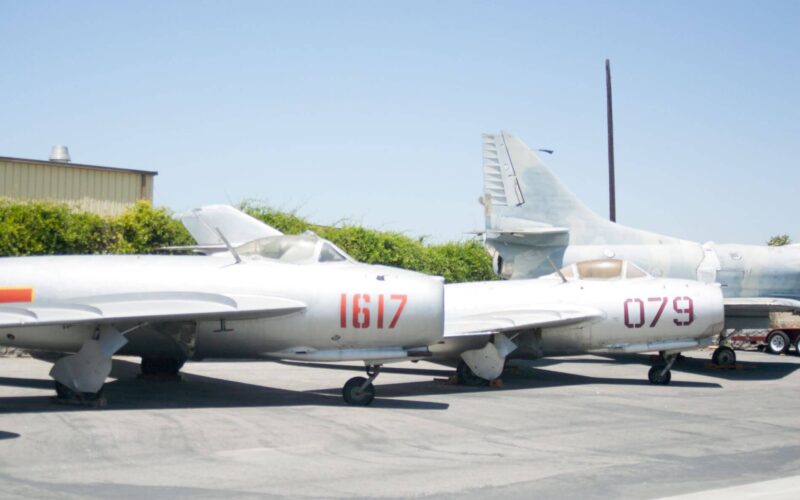We all love the new and advanced aircraft. But what are some of the longest-serving and the oldest fighter jets still in service within militaries?
Of course, if a military wants to keep an edge on the battlefield, it has to operate the newest and the most advanced tech available. But sometimes that is simply not possible. Budgets might be too small, or the political situation too inconvenient to buy new fighter jets. So, old ones have to remain in service.
Old does not mean bad though. First, jets can be well kept and maintained, and be as capable as they were when they first appeared. Second, they can be – and mostly are – upgraded with newer and better engines, radars, weapons, and other systems, keeping just an old shell with all-new capabilities. Third, and most important – most surviving aircraft of old models are of newer and advanced variants, introduced just before the model went out of production.
All of this results in a simple fact that the year of introduction of the jet means very little. For example – in theory – Mikoyan-Gurevich MiG-21 was introduced in 1959. But most, if not all operational aircraft of this kind are of MiG-21bis or similar variants from the 70s; on top of that, many of them were upgraded with new radars, avionics, and weapons in the 90s and 2000s.
Finally, we have to keep in mind that pilots, infrastructure, and tactics are what wins a fight, and characteristics – such as age – of a fighter jet is just one of many variables on a battlefield.
But it is an interesting variable nonetheless, so, let’s see what are the oldest fighter jet models still operational. This list is based on the introduction into service, and an aircraft has to belong to a category of fighter jets – meaning a design optimized for air-to-air combat, usually with ground attack capability. There are many caveats to that, but we will discuss them as we go along.
Honorary mention no. 1: SEPECAT Jaguar, Dassault Mirage F-1, Grumman F-14 Tomcat
The early 70s saw an introduction of a whole slew of new fighter jets, many of them, unfortunately, not old enough to make this list. The Jaguar, a French-British fighter-bomber introduced in 1973, still serves with the Indian Air Force. The Mirage F-1 appeared in the same year, and serves with Morocco, Iran and some others. F-14 Tomcat entered into service in 1974, and although retired by the United States, it is still flown by the Islamic Republic of Iran Air Force, which manages to maintain the jet for four decades without the support of its manufacturer.
Honorary mention no. 2: Mikoyan-Gurevich MiG-23
In 1970, three brand-new fighter jets were introduced into Soviet service. MiG-23 was one of them, but out of the three, it was technically the newest. The development started in the early 60s, and the prototype first flew in 1967. It is also in active use by a number of countries, including North Korea, Cuba and Syria.
10. Mikoyan-Gurevich MiG-25
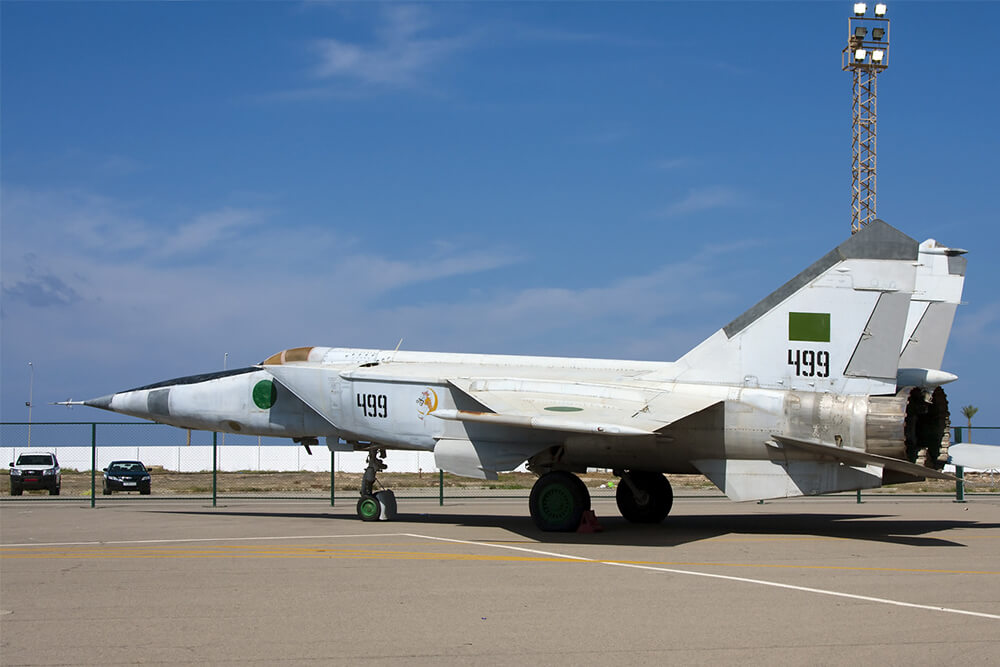
Libyian MiG-25 (Image: Rob Schleiffert / Wikipedia)
Another, much more famous high-speed interceptor introduced in 1970, MiG-25 first flew in 1964, and it took 6 years for it to be deployed with the Soviet Air Force. Nowadays, only a handful of these once-feared fighters remain in limited service with Algerian, Libyan and Syrian air forces, and it is unclear if the jets are in airworthy condition at all.
9. Sukhoi Su-17
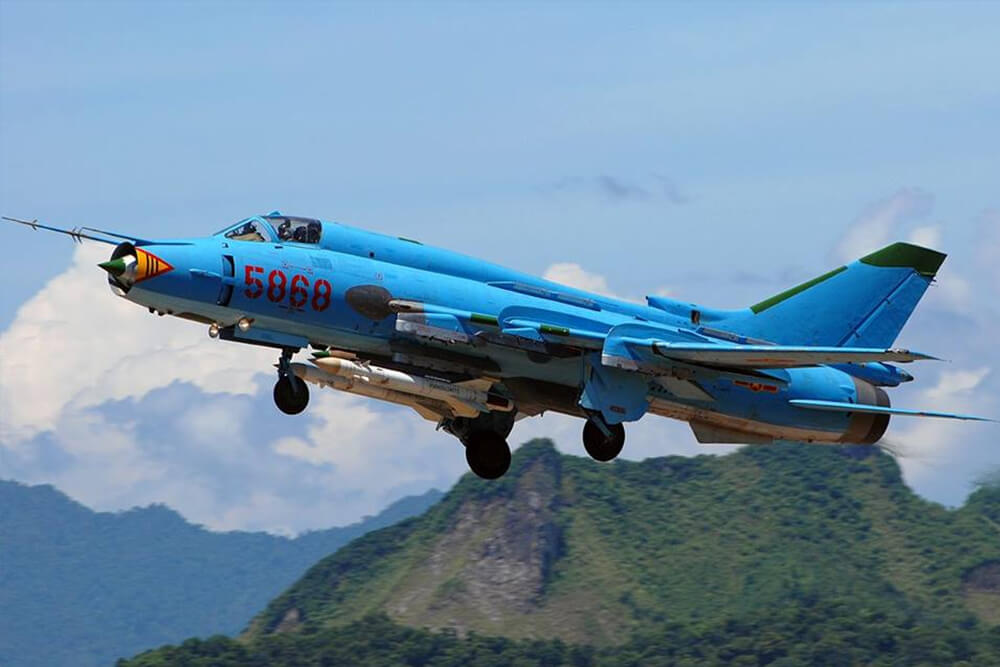
Vietnamiese Su-22M4:a very heavily upgraded Su-17 (Image: Hoangprs5 / Wikipedia)
This Soviet fighter-bomber is actually a deeply reworked Su-7 from the 50s, with swept wings and other upgrades. It was introduced in 1970 too, and mostly performed the role of fast ground attack aircraft. The export version was called Su-20, and its upgraded variant with new engines, avionics and weapons systems became known as Su-22. These are still in service with Vietnam, Iran, Poland and several other countries. Lately, Syrian Su-22s were heavily involved in the country’s prolonged civil war.
By the way, this place could be occupied by another entry – the Harrier Jump Jet. World’s first vertical take-off and landing fighter jet, the Harrier was introduced in 1969. The first generation of the aircraft was retired a long time ago, but the McDonnell Douglas AV-8B Harrier II is still in service with the United States, Italy and Spain. Is it a different model of aircraft than the first Harrier? It depends on who you ask: pretty much every aspect of the jet is reworked, but some still consider it just a variant. Therefore, we list it as a half-entry.
8. Dassault Mirage 5
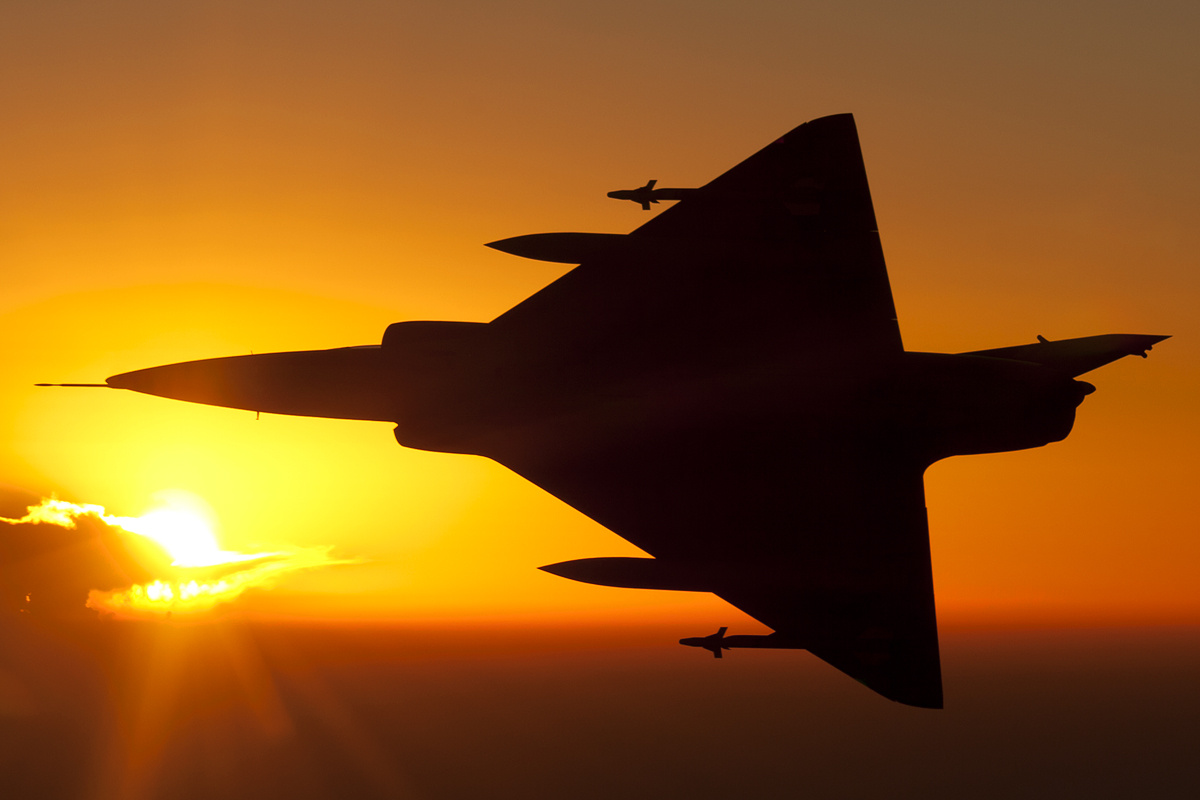
Pakistani Mirage 5 (Image: Asuspine / Wikipedia)
Developed from the older Mirage III in 1967, the Mirage 5 was more ground attack focused, but still retained good air-to-air capability. Large number of them serve with the Pakistani Air Force, which heavily upgraded them through the years. The Israeli-produced version – IAI Kfir – is also still operated by several countries.
7. Northrop F-5
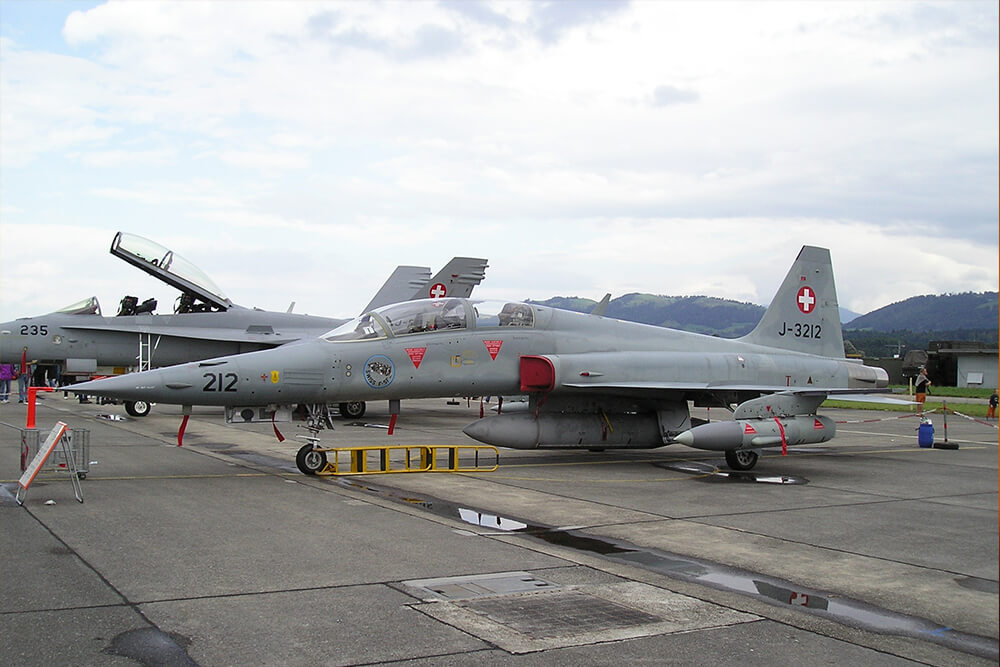
Swiss F-5 (Image: Hornet Driver / Wikipedia)
One of few American mostly export-oriented aircraft, the F-5 entered into service in 1964. Light and nimble, it was also relatively cheap, and proved popular throughout the world. Upgraded variants are in service with many countries, including South Korea, Mexico, Iran, Taiwan and Switzerland.
6. McDonnell Douglas F-4 Phantom II

Hellenic Air Force F-4 Phantom II (Image: Adrian Pingstone / Wikipedia)
The legendary Phantom first entered service in 1961, and had a lot of potential for upgrades. It still composes a significant part of fighter fleets within the air forces of Greece, Turkey, Iran and South Korea.
5. Dassault Mirage III
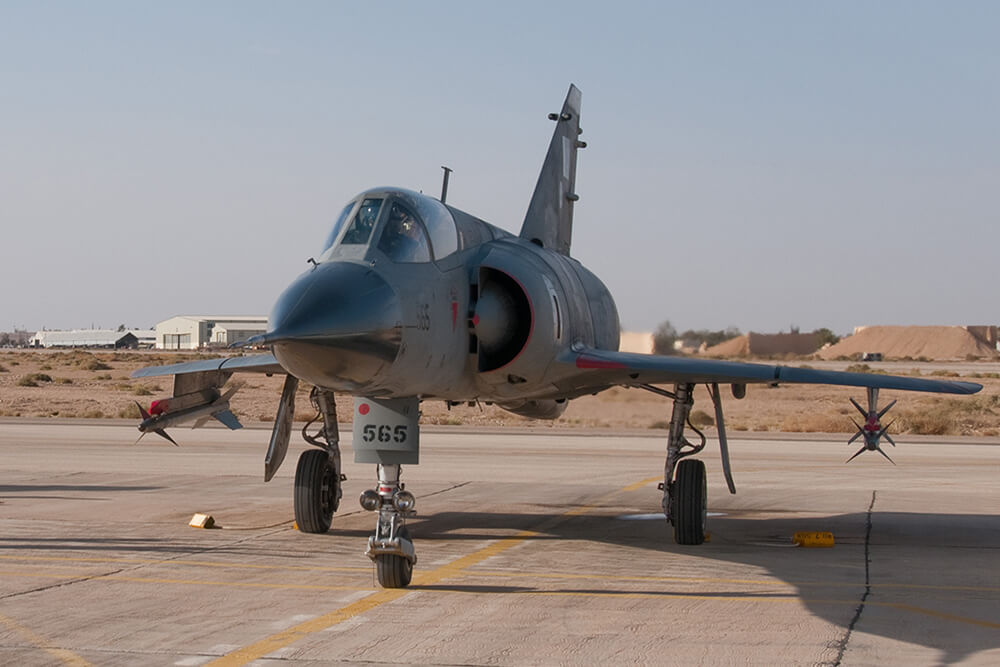
Pakistani Mirage III (Image:Tech. Sgt. Wolfram M. Stumpf / Wikipedia)
The original Mirage was introduced in 1961. It is hard to believe that this iconic aircraft was developed in the 50s. Now only the Pakistan Air Force operates Mirage IIIs, mostly using them as a ground attack aircraft.
4. Sukhoi Su-7

Ex-Polish Air Force Su-7 (Image: Jan Hrdonka / Wikipedia)
The Su-7 was initially created as an agile supersonic dogfighter, but proved to be much more effective in a ground attack role. It entered service in 1959, together with MiG-21, yet was a slightly newer development. A couple of dozens of fighter-bomber variants were delivered to North Korea in the 70s, where they remain to this day, in an unknown state of operability.
3. Mikoyan-Gurevich MiG-21
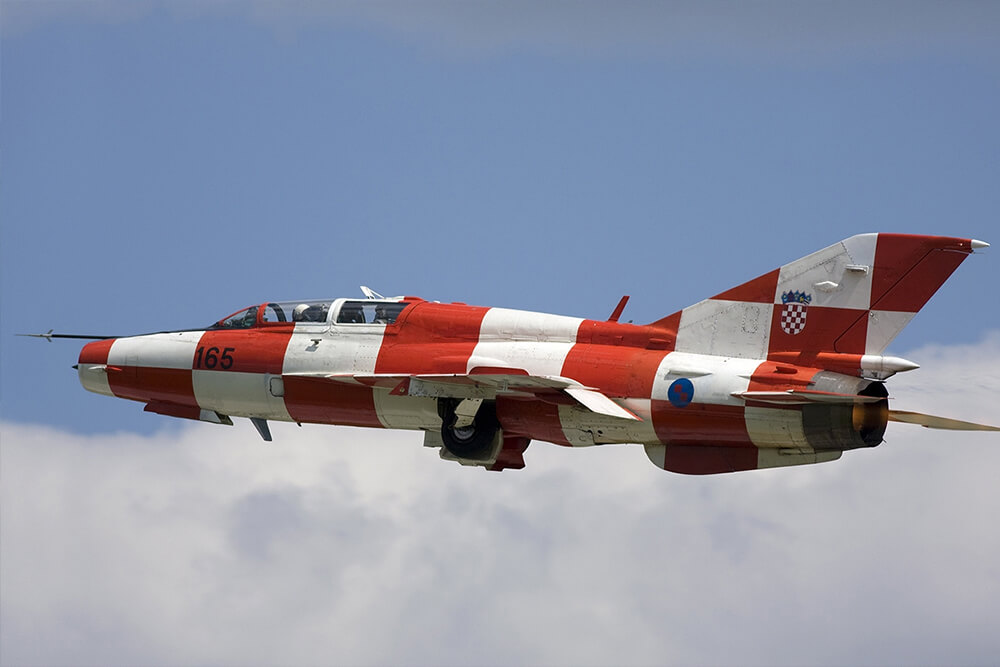
Soon-to-be-retired Croatian MiG-21 (Image: Chris Lofting / Wikipedia)
Likely the oldest widely-used fighter jet, MiG-21 and its numerous variants and derivatives still enjoy impressive popularity with a large number of air forces. First deployed by the Soviet Union in 1959 the Fishbed was upgraded many times, and some say that with modern avionics and weapons it can hold its own against far newer 4th generation jets.
While most prominent users, such as India and Romania, are planning its retirement, there is a high chance that some air forces will retain the jet and keep it operational for decades to come.
Before listing the oldest two aircraft, we have to give a half-entry shout out to Douglas A-4 Skyhawk, introduced in 1956. Is it a fighter jet? No, it is an attack aircraft, with air-to-air capability as an afterthought. But was it used as a fighter? Oh yes. And it still is. Extremely maneuverable and easy to handle at low speeds, it was widely used by the U.S. in dissimilar training to simulate nimble Soviet jets, and the heavily upgraded A-4AR Fightinghawk remains the primary air defense asset of the Argentinian Air Force.
2. Mikoyan-Gurevich MiG-19
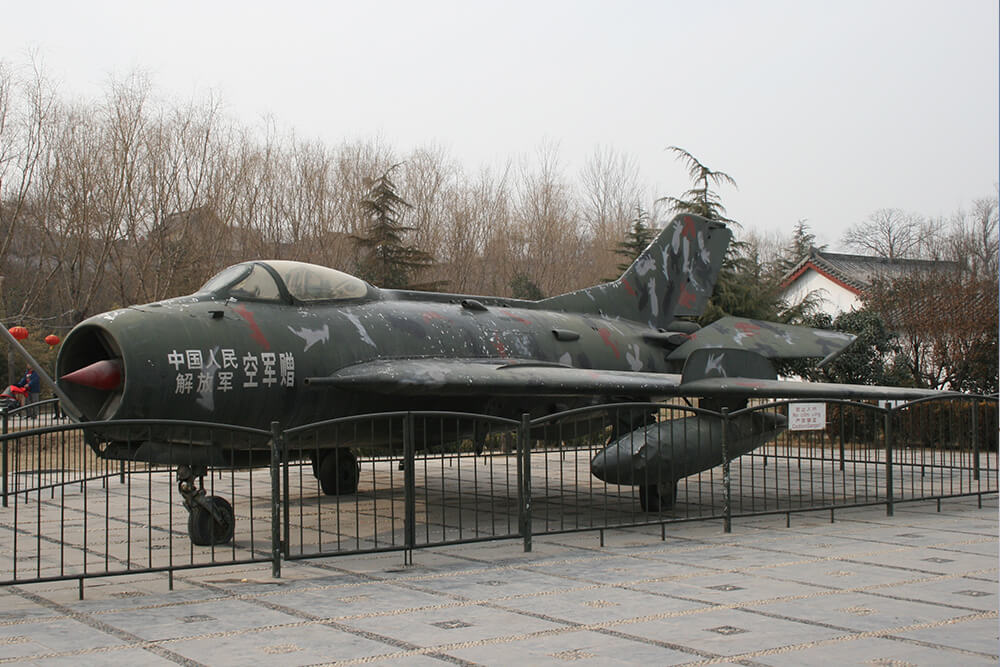
Shenyang-6, a Chinese-manufactured version of MiG-19 (Image: Gary Todd / Wikipedia)
The first Soviet supersonic fighter jet, the MiG-19 entered into service in 1955. The original model is long gone, remaining only in museums. But the Chinese-produced version, the Shenyang J-6, is still going strong. It is one of the most numerous fighters in North Korean possession, and several others – such as Myanmar and Sudan – fly several of them too. Even the Chinese Naval Air Force keeps some as trainers. It is very doubtful that all officially operational J-6s are in airworthy condition, but at least some very well may be.
1. Mikoyan-Gurevich MiG-17
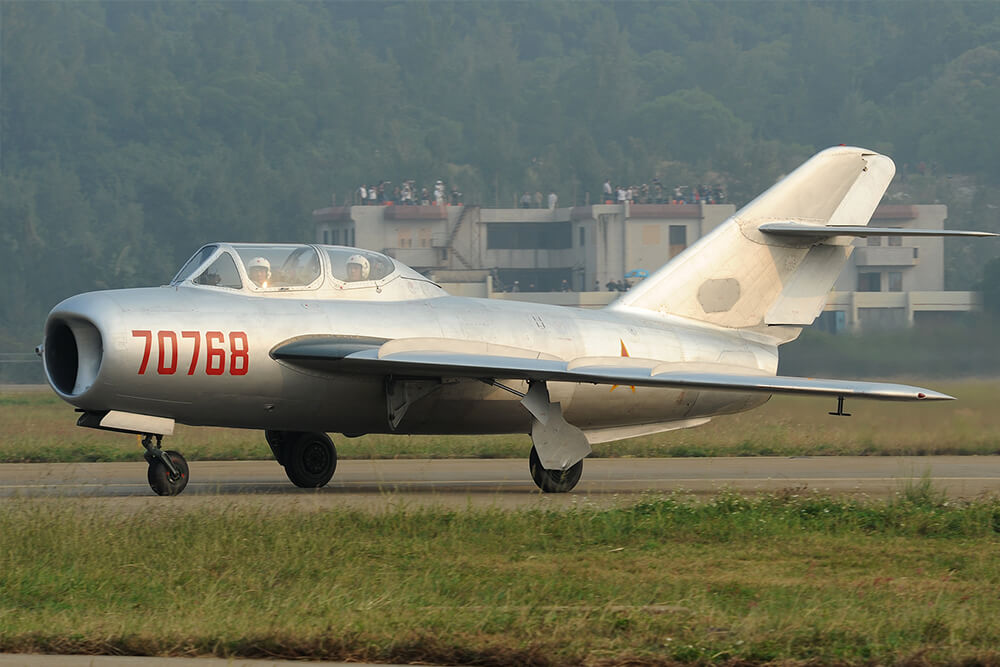
Shenyang J-5 trainer (Image:Peng Chen /Wikipedia)
Developed from MiG-15 of Korean War fame, the MiG-17 was faster, more powerful, and in some later variants could use air-to-air missiles. It entered service in 1952, and a lot of countries still claim to operate them.
The actual situation is that most of those “operational” MiG-17s of, say, Madagascar or Ugandan air forces have spent decades in open storage, theoretically waiting for a call to action, but slowly decaying and getting cannibalized. Shenyang J-5, a Chinese-built variant, may have fared better: some reports indicate that at least half of North Korean J-5s may be operational.
Anyway, as long as there is at least one flyable MiG-17 in some air force somewhere in the world, it will remain the oldest model of fighter jet in service. And it is going to be like that for years to come.
Or is it?
Alternatively: Hawker Hunter
While introduced into service two years later than MiG-17, the Hunter was (in one or another form) in development since the mid-40s, and was an older design than even the MiG-15.
As old, mostly ground-attack optimized Hunters were being retired around the world at the end of the Cold War, several dozens of them were picked up by private operators. Today, some private military corporations (PMCs) – essentially, private air forces – still operate the jet, most notably – the Airborne Tactical Advantage Company (ATAC), which uses them for training and simulated combat.
Although its “in service” status is very questionable, and an introduction date – which is still later than that one of MiG-17 – makes it technically a newer jet, the Hunter can be considered as one of the oldest fighter jets used by any military.

